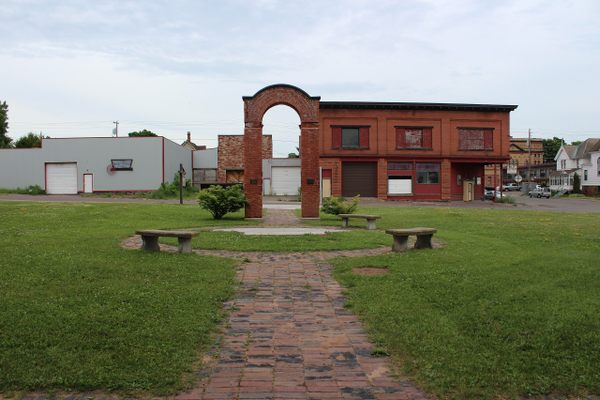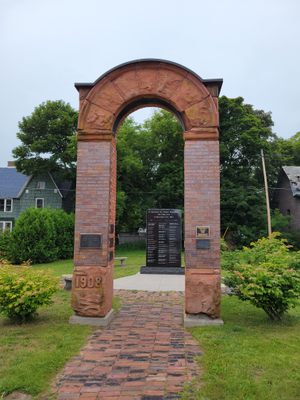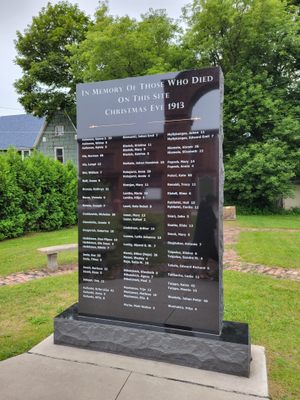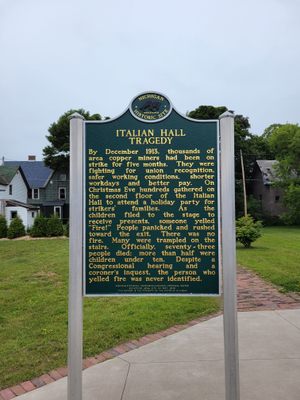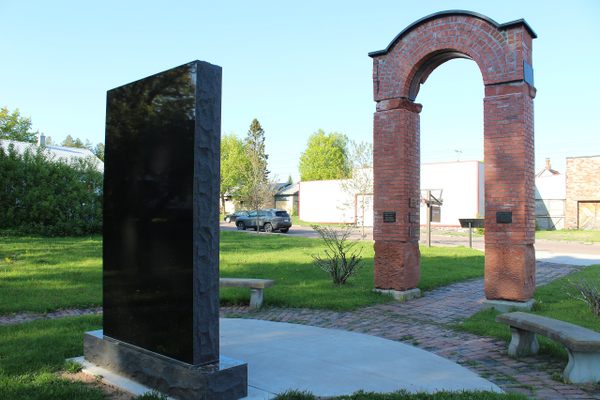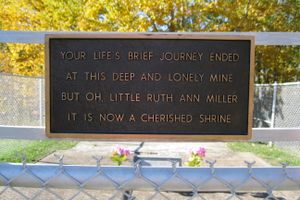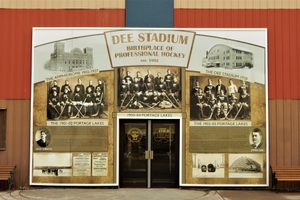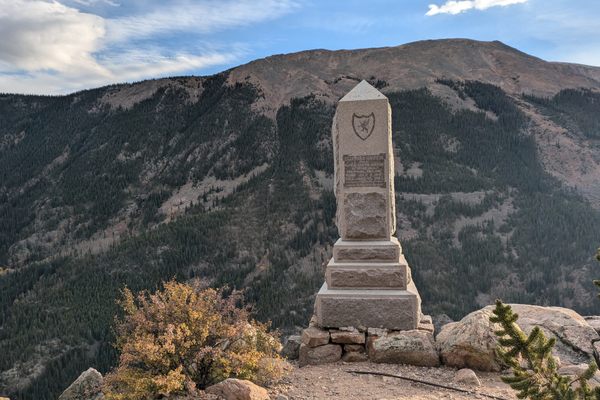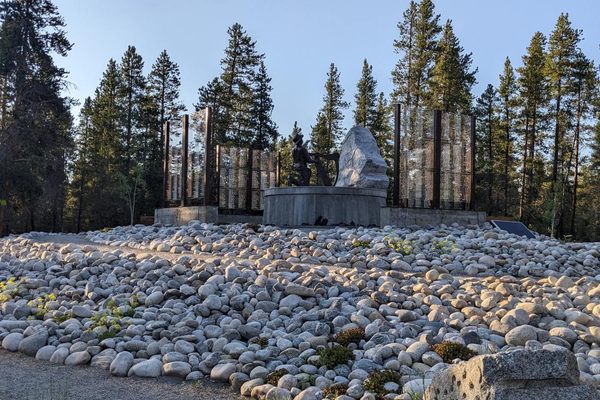About
To say that early 20th-century American labor relations were tumultuous is an understatement. During this era, newly unionized workers united to protest low wages, child labor, and the mechanization of work. A constellation of strikes exploded across the nation from Seattle to New York City and even in small towns like Calumet, Michigan.
Calumet, now seven times smaller than its population in 1910, was once the capital of the burgeoning Copper Country, a region in Michigan's Upper Peninsula that at the time produced more copper than anywhere else in the world. But the economic success of the mining companies contrasted with the poverty among many who worked in those mines.
For an 11-hour shift in a dark, dangerous mine where injuries and fatalities weren't uncommon, one received $2.50—a low pay even by the day's standard. And after workers organized to counterbalance the company, their union membership went unrecognized. The miners called on the owners for higher wages, shorter hours, better working conditions, and union membership. When none of these demands were met, the union went on strike.
Five months into the strike, the company was still unwilling to budge, and the miners and their families were bracing for a sad holiday season. The Woman's Auxiliary of the World Federation of Miners organized a Christmas party at Italian Hall to give families and especially children a glimmer of happiness during this uncertain and tense period.
The party took place in the two-story Italian Hall, which served as the headquarters of the Società Mutua Beneficenza Italiana (Italian Mutual Benefit Society) and a community center. Some 600 people attended the gathering. Miners and community members donated presents so that children could still receive gifts that season.
As the children were lining up for their gifts, someone reportedly and falsely yelled "Fire!" In the stampede to the exit, there was a massive pile-up. At least 73 people perished, over 60 of them children. The person who shouted "Fire!" has never been identified, though some believe this individual was working for company owners. Some even claimed this person was wearing a Citizens' Alliance pin, an anti-union organization.
Investigations into the calamity were notoriously difficult to conduct, as 90 percent of Calumet residents were born in foreign countries like Finland and Croatia, yet witnesses were forced to testify in English. Though the investigations were inconclusive, Citizens' Alliance was exonerated.
Folk singer Woody Guthrie immortalized the tragedy in his song "1913 Massacre," though with inconsistencies. Guthrie squarely places the blame on "union scabs" and repeats the claim that these individuals actively held the doors shut so the frenzied families could not exit. Eyewitness accounts refute this, and the instigator of the tragedy remains unknown. Another rumor that persists is that Italian Hall's doors opened inward, hence the huge pile-up. But this is demonstrably false from photos of the era.
In 1984, Italian Hall was demolished, save for the archway, which was relocated to a memorial park. The archway stands alongside a historical marker, informational sign, and memorial listing the names of the identified deceased.
Related Tags
Published
October 11, 2022
